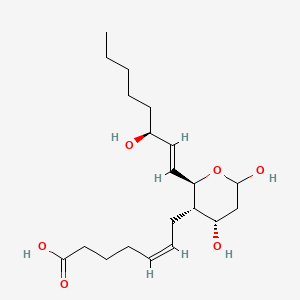| MeSH term | MeSH ID | Detail |
|---|---|---|
| Hemolysis | D006461 | 131 associated lipids |
| Airway Obstruction | D000402 | 13 associated lipids |
| Uremia | D014511 | 33 associated lipids |
| Stomach Ulcer | D013276 | 75 associated lipids |
| Kidney Failure, Chronic | D007676 | 51 associated lipids |
| Diabetes Mellitus | D003920 | 90 associated lipids |
| Hypoxia | D000860 | 23 associated lipids |
| Graft Occlusion, Vascular | D006083 | 11 associated lipids |
| Arrhythmias, Cardiac | D001145 | 42 associated lipids |
| Adenocarcinoma | D000230 | 166 associated lipids |
| Ovarian Neoplasms | D010051 | 10 associated lipids |
| Pain | D010146 | 64 associated lipids |
| Contusions | D003288 | 3 associated lipids |
| Autoimmune Diseases | D001327 | 27 associated lipids |
| Lupus Erythematosus, Systemic | D008180 | 43 associated lipids |
| Lung Diseases | D008171 | 37 associated lipids |
| Lung Neoplasms | D008175 | 171 associated lipids |
| Wounds and Injuries | D014947 | 20 associated lipids |
| Pleurisy | D010998 | 20 associated lipids |
| Burns | D002056 | 34 associated lipids |
Thromboxane b2
Thromboxane b2 is a lipid of Fatty Acyls (FA) class. Thromboxane b2 is associated with abnormalities such as endothelial dysfunction, Diabetes Mellitus, Non-Insulin-Dependent, Diabetes Mellitus, Ischemia and Thrombocytosis. The involved functions are known as Platelet Activation, Excretory function, Anabolism, Inflammation and mRNA Expression. Thromboxane b2 often locates in Endothelium, Hepatic and Microsomes, Liver. The associated genes with Thromboxane b2 are PTGS2 gene, prothrombin fragment 2 and CCL14 wt Allele.
Cross Reference
Introduction
To understand associated biological information of Thromboxane b2, we collected biological information of abnormalities, associated pathways, cellular/molecular locations, biological functions, related genes/proteins, lipids and common seen animal/experimental models with organized paragraphs from literatures.
What diseases are associated with Thromboxane b2?
Thromboxane b2 is suspected in endothelial dysfunction, Diabetes Mellitus, Non-Insulin-Dependent, Diabetes Mellitus, Ischemia, Thrombocytosis, Acute Coronary Syndrome and other diseases in descending order of the highest number of associated sentences.
Related references are mostly published in these journals:
| Disease | Cross reference | Weighted score | Related literature |
|---|
Possible diseases from mapped MeSH terms on references
We collected disease MeSH terms mapped to the references associated with Thromboxane b2
PubChem Associated disorders and diseases
What pathways are associated with Thromboxane b2
There are no associated biomedical information in the current reference collection.
PubChem Biomolecular Interactions and Pathways
Link to PubChem Biomolecular Interactions and PathwaysWhat cellular locations are associated with Thromboxane b2?
Visualization in cellular structure
Associated locations are in red color. Not associated locations are in black.
Related references are published most in these journals:
| Location | Cross reference | Weighted score | Related literatures |
|---|
What functions are associated with Thromboxane b2?
Related references are published most in these journals:
| Function | Cross reference | Weighted score | Related literatures |
|---|
What lipids are associated with Thromboxane b2?
There are no associated biomedical information in the current reference collection.
What genes are associated with Thromboxane b2?
Related references are published most in these journals:
| Gene | Cross reference | Weighted score | Related literatures |
|---|
What common seen animal models are associated with Thromboxane b2?
There are no associated biomedical information in the current reference collection.
NCBI Entrez Crosslinks
All references with Thromboxane b2
Download all related citations| Authors | Title | Published | Journal | PubMed Link |
|---|---|---|---|---|
| Jacobi KE et al. | Determination of eicosanoid and cytokine production in salvaged blood, stored red blood cell concentrates, and whole blood. | 2000 | J Clin Anesth | pmid:10818321 |
| Tanus-Santos JE et al. | Endothelin ET(A) receptor antagonism attenuates the pressor effects of nicotine in rats. | 2000 | Eur. J. Pharmacol. | pmid:10822051 |
| Turpeinen AM et al. | Similar responses in hemostatic factors after consumption of wholemeal rye bread and low-fiber wheat bread. | 2000 | Eur J Clin Nutr | pmid:10822290 |
| Romano M et al. | Fluvastatin reduces soluble P-selectin and ICAM-1 levels in hypercholesterolemic patients: role of nitric oxide. | 2000 | J. Investig. Med. | pmid:10822898 |
| Sheu JR et al. | Mechanisms involved in the antiplatelet activity of Staphylococcus aureus lipoteichoic acid in human platelets. | 2000 | Thromb. Haemost. | pmid:10823277 |
| Nosál' R et al. | Chloroquine: a multipotent inhibitor of human platelets in vitro. | 2000 | Thromb. Res. | pmid:10828481 |
| Maccarrone M et al. | Activation of different lipoxygenase isozymes induces apoptosis in human erythroleukemia and neuroblastoma cells. | 2000 | Biochem. Biophys. Res. Commun. | pmid:10833416 |
| Semenov AV et al. | [Soluble P-selectin - a marker of platelet activation and vessel wall injury: increase of soluble P-selectin in plasma of patients with myocardial infarction, massive atherosclerosis and primary pulmonary hypertension]. | 2000 | Ter. Arkh. | pmid:10833791 |
| Numminen H et al. | The effect of acute ingestion of a large dose of alcohol on the hemostatic system and its circadian variation. | 2000 | Stroke | pmid:10835443 |
| Sakamoto K et al. | An imbalance in plasma prostanoids in patients with Raynaud's phenomenon and pulmonary vasospasm. | 1999 | Eur. Respir. J. | pmid:10836338 |
